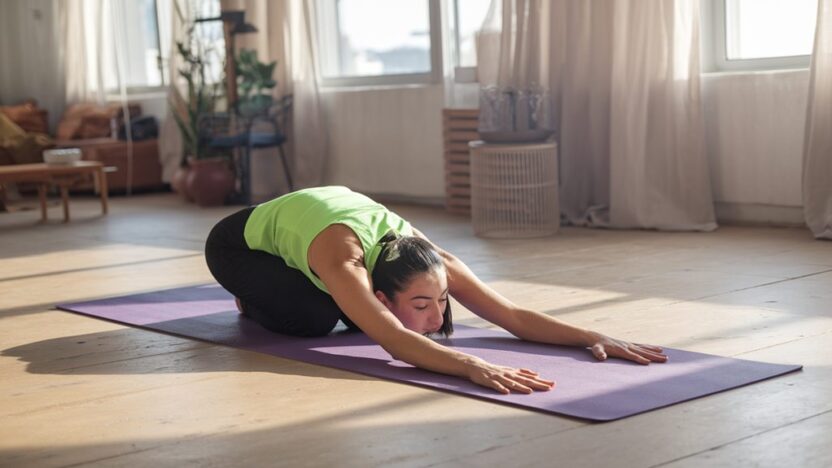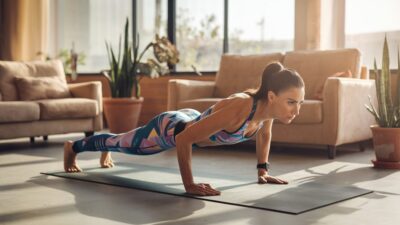Regular stretching transforms your body's flexibility and overall wellness through two main approaches: dynamic and static stretching. You'll want to incorporate dynamic stretches, like leg swings and arm circles, before workouts to warm up your muscles and boost blood flow. After exercise, static stretches, where you hold positions for 15-30 seconds, help lengthen your muscles and reduce tension. By practicing proper form and avoiding common mistakes like bouncing or holding your breath, you'll enhance your range of motion and daily comfort. Creating a consistent routine that targets all major muscle groups will release your body's full potential for movement and strength.
Benefits of Regular Stretching
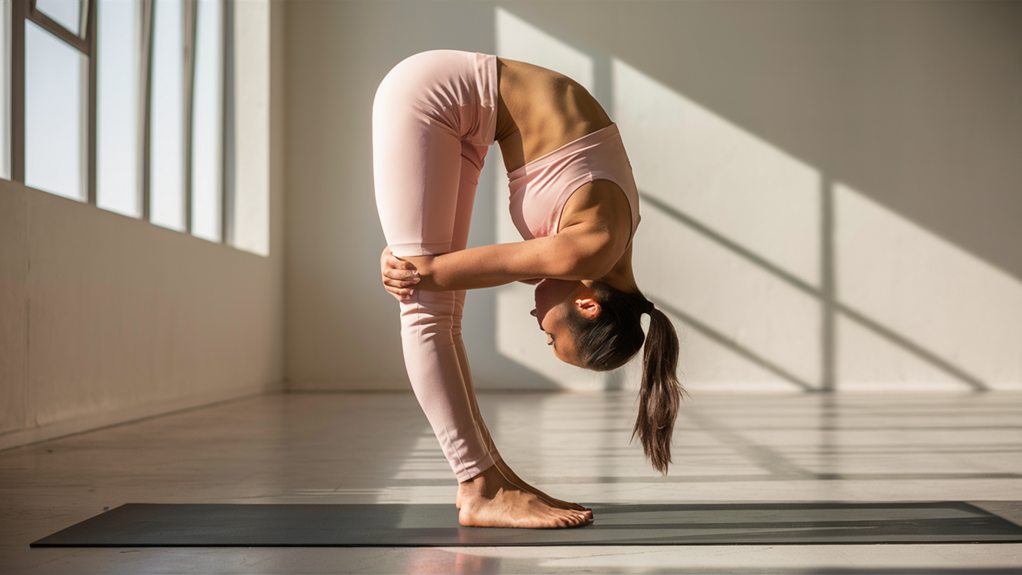
Three key benefits make regular stretching essential for overall wellness.
First, stretching improves your flexibility and range of motion, which helps you move more freely in daily activities and feel less stiff when you wake up. As you stretch consistently, you'll notice that reaching for objects and bending down becomes much easier, making everyday tasks more comfortable.
Additionally, understanding the difference between flexibility and mobility can enhance your stretching routine, as both contribute to better health and performance understanding flexibility vs. mobility.
Second, you'll experience significant muscle tension relief through regular stretching sessions. When you stretch properly, your muscles release built-up tension from work, stress, and physical activity, leading to better relaxation and decreased muscle soreness.
This relief can help you sleep better and feel more energized throughout your day.
Types of Flexibility Training
The main types of flexibility training encompass static, dynamic, and proprioceptive neuromuscular facilitation (PNF) stretching.
Static stretching involves holding a position for 15-60 seconds, allowing your muscles to gradually lengthen and relax. You'll find this type particularly useful after workouts or when you're trying to increase your overall flexibility. Incorporating yoga into your routine can greatly enhance this process, as it not only improves flexibility but also promotes mental well-being through mindfulness practices.
Dynamic stretching incorporates movement-based exercises, where you'll actively move your joints and muscles through their full range of motion. These flexibility routines might include arm circles, leg swings, or hip rotations, which are perfect for warming up before physical activity.
You'll notice that dynamic stretches help prepare your body for the specific movements you'll be doing in your workout.
PNF stretching combines stretching and muscle contractions to enhance your range of motion. During this technique, you'll alternate between stretching a muscle and contracting it against resistance.
While it's one of the most effective methods for improving flexibility, you'll want to learn proper form from a qualified instructor, as PNF stretching requires specific timing and positioning to be safe and effective.
Dynamic Vs Static Stretches
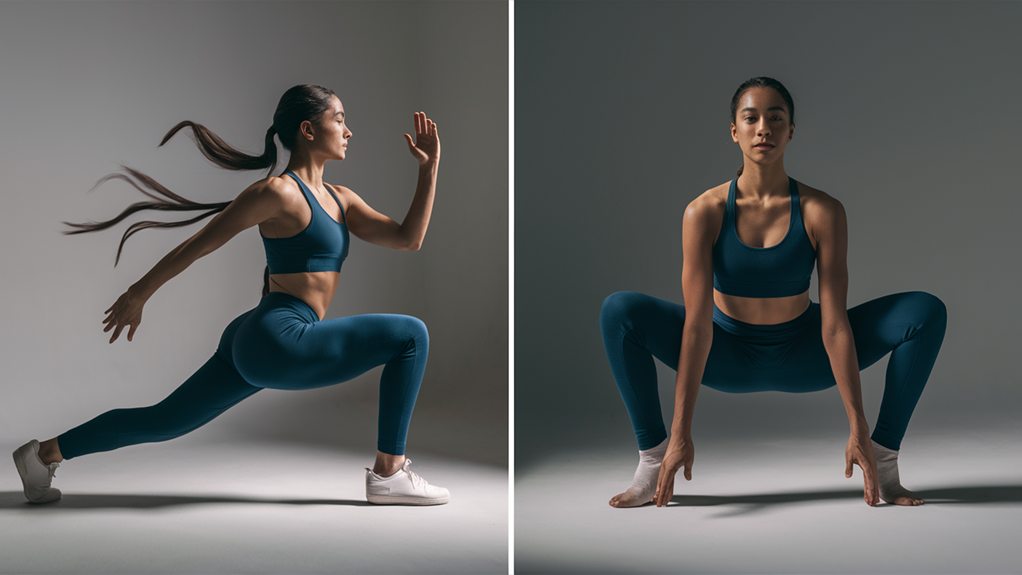
Understanding differences between dynamic and static stretches helps you choose the right approach for your fitness goals.
Dynamic stretches involve continuous movement, like arm circles or leg swings, which warm up your muscles and improve your range of motion. Incorporating flexibility exercises into your daily life, such as quick stretches at work or home, can enhance these benefits even further add flexibility exercises. These mobility exercises prepare your body for physical activity by gradually increasing blood flow and muscle temperature, making them perfect for pre-workout routines.
Static stretches, on the other hand, require you to hold a specific position for 15-30 seconds without movement. You'll typically perform these after exercise when your muscles are warm and pliable. For example, you might hold a hamstring stretch or shoulder stretch to increase flexibility and reduce post-workout muscle tension.
Static stretching helps lengthen muscle fibers and can promote better recovery.
When you're planning your workout, remember to match your stretching style to your activity phase. Use dynamic stretches during warm-ups to prepare for movement, and save static stretches for cool-downs when you're ready to improve flexibility and relax your muscles.
This approach will help you maximize the benefits of both stretching types while reducing your risk of injury.
Common Stretching Mistakes
Many people sabotage their flexibility progress by making preventable stretching mistakes. When you're working on muscle lengthening, it's essential to avoid common errors that can limit your results or, worse, lead to injury. Stretching not only improves flexibility but also enhances overall wellness and helps in stress reduction.
One of the biggest mistakes you'll want to avoid is bouncing during your stretches, as this can trigger your muscle's protective reflex and cause it to tighten up instead of relax. You're also likely making a mistake if you're holding your breath, which prevents your muscles from getting the oxygen they need to stretch effectively.
Another common error is rushing through your stretches, when you should be holding each position for at least 15-30 seconds.
You'll also want to avoid overstretching, which happens when you push your muscles too far, too fast. Instead of forcing your body into extreme positions, focus on gradual progress and listen to your body's signals.
Creating Your Stretching Routine
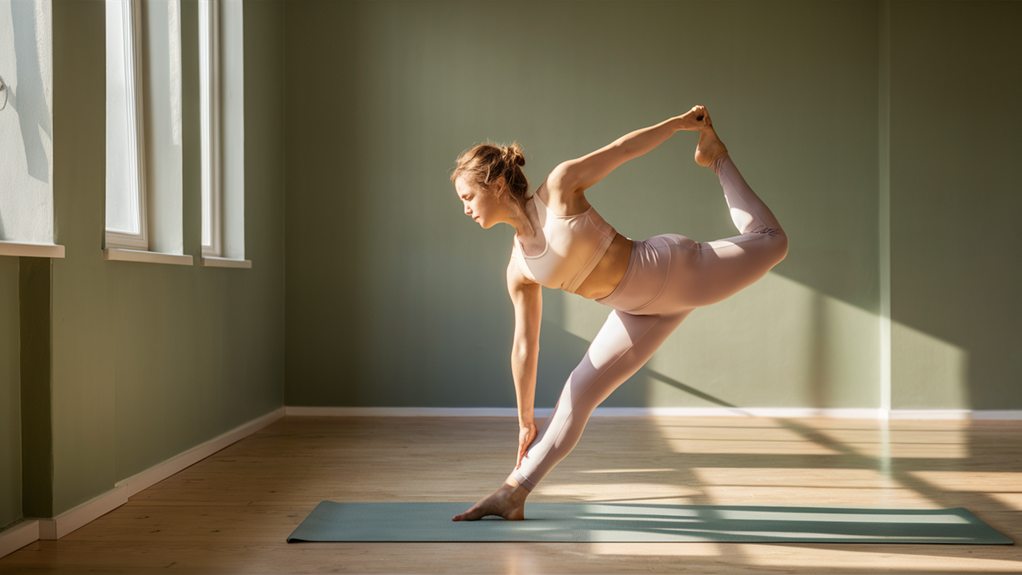
Building on what you've learned about avoiding stretching mistakes, developing a personalized stretching routine can transform your flexibility journey. Your routine should start with a 5-10 minute warm-up to increase blood flow and prepare your muscles for stretching.
Begin with dynamic stretches that focus on joint mobility, like arm circles and leg swings, before moving to static stretches. You'll want to target major muscle groups in a specific order: start with your neck and shoulders, move down to your arms and back, then focus on your hips, legs, and ankles.
Plan to hold each static stretch for 15-30 seconds, breathing deeply throughout. Schedule your stretching sessions at least 3-4 times per week, ideally at the same time each day to build consistency. If you're particularly tight in certain areas, you can stretch those spots twice daily.
Remember to listen to your body and adjust the intensity as needed. Keep a stretching log to track your progress and note which stretches feel most beneficial. As you become more flexible, gradually increase the duration and complexity of your stretches to continue challenging yourself.
